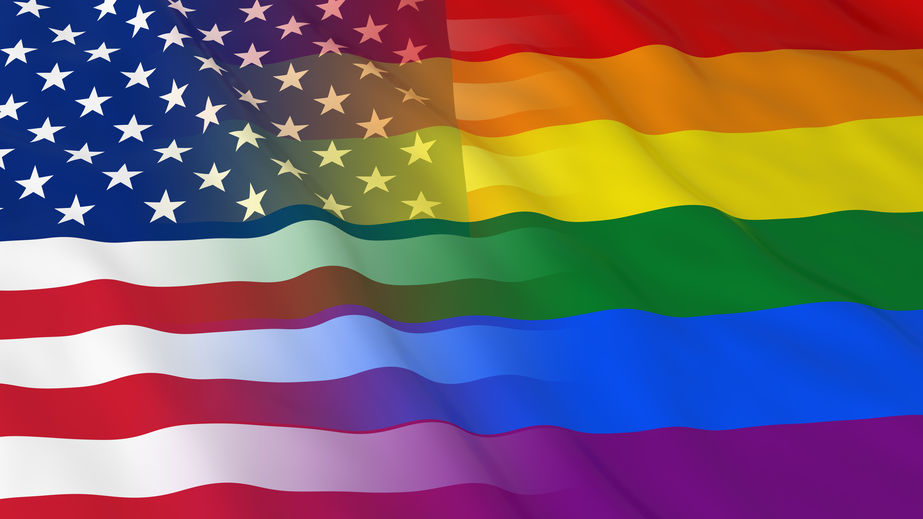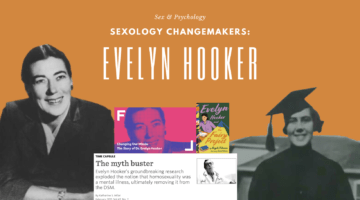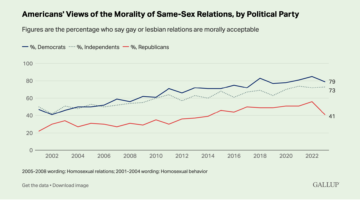The Number of Americans Identifying as Bisexual has Tripled in the Last Decade
May 6, 2019 by Justin Lehmiller
The percentage of Americans who identify as LGBT is on the rise. Data from Gallup and other national surveys suggest that, as attitudes toward sexual minorities have become more positive, more and more Americans are comfortable reporting LGBT identities. However, these data haven’t been broken down by subgroups, so it’s not entirely clear whether we’re seeing across-the-board increases, or just increases in identification with certain subgroups. A recent analysis of data from the General Social Survey suggests that much of the increase is attributable to a rise in bisexual identification.
When researchers compared rates of bisexual identification to rates of gay and lesbian identification over the last decade (2008-2018), what they saw was that the numbers for gay/lesbian remained pretty stable. Specifically, 1.6% identified as gay/lesbian in 2008, while 1.7% said the same in 2018.
The story for bisexual identification was very different.
Whereas 1.1% of Americans identified as bisexual in 2008, 3.3% did so in 2018. In other words, the rate of bisexual identification tripled in just 10 years. And not only that, but gay and lesbian individuals used to outnumber bisexuals—but now there are about twice as many self-identified bisexuals as there are self-identified gays and lesbians.
Those are pretty striking changes in a short period of time.
It’s also worth noting that the increase in bisexual identification was driven largely by women, people in the 18-34 age group, and Black Americans (you can see the numbers and how they’ve changed over time for various demographic groups here).
We can’t say for sure why these shifts are occurring, but one likely contributing factor would be changes in attitudes toward sexual minorities (and attitudes toward bisexual persons specifically have notably improved). This may make people who have minority identities more likely to come out. Likewise, it may be that bisexuals today feel less pressure to “pick a side,” given that more and more people view sexual orientation as a spectrum rather than a dichotomy.
It’s clear that we need more research to understand what’s behind these shifts, but we also need to expand research on bisexuality more broadly because it is an orientation that has historically been understudied (in part, because it hasn’t always been recognized as a legitimate orientation—however, research has changed that). We would also do well to stop routinely lumping bisexual in with gay/lesbian in reporting data on the prevalence of sexual minorities because aggregate data appears to be overshadowing some distinct shifts taking place in the community.
Want to learn more about Sex and Psychology ? Click here for previous articles or follow the blog on Facebook (facebook.com/psychologyofsex), Twitter (@JustinLehmiller), or Reddit (reddit.com/r/psychologyofsex) to receive updates. You can also follow Dr. Lehmiller on YouTube and Instagram.
To learn more about these data, see: Compton, D., & Bridges, T. (2019). 2018 GSS Update on the US LGB population.
Image Credit: 123RF/fredex8
You Might Also Like:

Dr. Justin Lehmiller
Founder & Owner of Sex and PsychologyDr. Justin Lehmiller is a social psychologist and Research Fellow at The Kinsey Institute. He runs the Sex and Psychology blog and podcast and is author of the popular book Tell Me What You Want. Dr. Lehmiller is an award-winning educator, and a prolific researcher who has published more than 50 academic works.
Read full bio >


